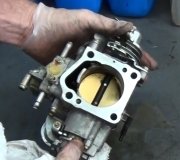I've taken my car to 3 different repair shops and have gotten 3 different answers about why this is happening and what needs to be fixed.
Background: 2000 Plymouth Neon, 11yrs old purchased in 1999, mantained well (tried to always fix what I was told), hestation occurred originally approx 3 wks ago at a 4 way stop. Press the gas petal to go and felt as if it wasn't going anywhere and it took an extra 2-3 seconds for engine to kick in. Didn't happen again until 2 wks later (this week) and happened 2 days in a row so I decided to take it in to the shop that I usually go to. Checked the transmission fluid in the meantime and it was extremely low. So thought that that was the problem although there haven't been any leaks on my garage floor.
Shop #1 (Thurs): Described the problem. Told them about the low transmission fluid. They test drove it. Recommended getting transmission service ($175). Had them do this. No mention of transmisson slipping or anything else. After picking up car later, the hesitation felt worse than when I started as if it almost was about to occur anytime I stopped.
Called the transmission place that replaced my rear main seal last year. They said they'd take a look for free same day as having transmission serviced.
Shop #2 (Thurs, tranny place): Look under the hood while parked in the lot (I was waiting inside and could see the tech doing it). Took it for a test drive. Was told that my transmission was coming apart on the inside and needed to be rebuilt ($2000). I asked how long I could drive it and it was suggested that I not wait more than a couple of days. Made appt to for them to do it next week on Monday.
Shop #3 (Fri): Friend convinced me to take car to her mechanic that she's been going to for several years. Their conclusion was that nothing wrong with transmission, broken engine mount (all 3) were the problem ($400) and didn't recommend driving the car at all.
Since my car was evidently dangerous to drive, I let shop #3 keep it to have engine mounts fixed and cancelled the tranny appt to have it rebuilt.
My question is who do I believe at this point? I hate to be taken advantage of but I don't want to be stuck on the side of the road somewhere.
Do you have any advice on what the real issue could be?
Saturday, October 9th, 2010 AT 8:38 AM



